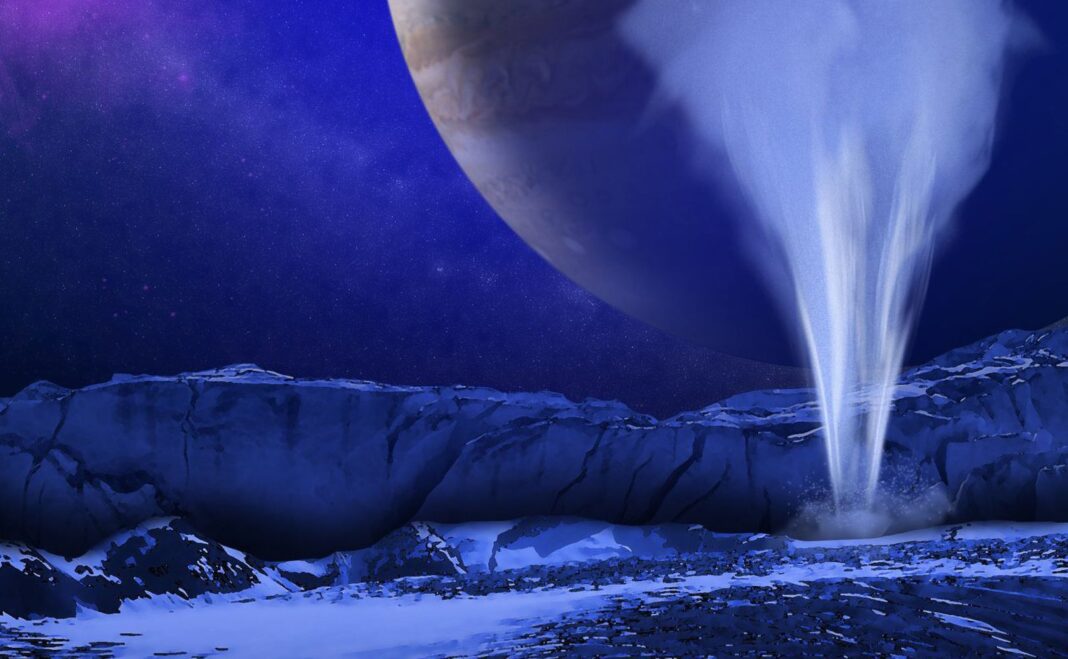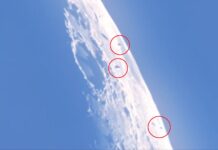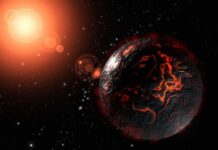The search for extraterrestrial life forms has to begin from our vicinity. The first logical assumption is our neighbor Mars, where scientists believe that liquid water existed billions of years ago. Climate changes stripped most of the Red Planet’s atmosphere, but there is a possibility that simple forms of life exist within the ice hidden under its rocky surface.
Some forms of life may still exist in our solar system on worlds other than Earth or Mars. While there aren’t too many candidates in the “golden zone”, where the temperature is just right for liquid water to exist, there are reasons to believe that alien organisms could live on some of the moons around us. The things that are the most important for these natural satellites to support life are liquid water, orbital stability, suitable atmosphere, favorable tidal effects, stable axial tilt and climate.
Europa
System: Jupiter
Diameter: 0.25 Earths (~ 90 % of our own Moon)
Mass: 0.008 Earths
Atmosphere: Very thin, mostly oxygen
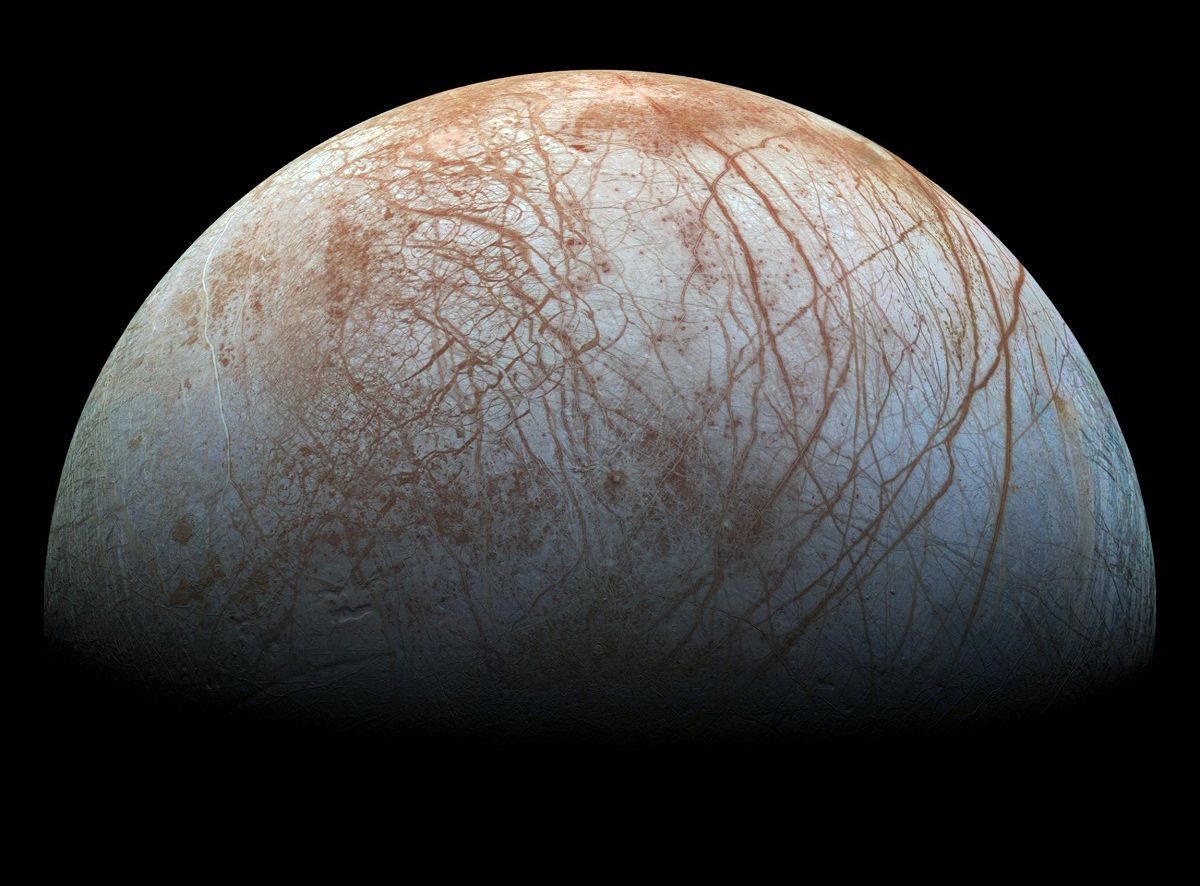
Europa is one of the most exciting prospects for extraterrestrial life in the Solar System. First, because there is a vast ocean buried beneath its icy surface. Heating caused by the tidal forces of Jupiter keeps large portions of these oceans liquid. This effect may provide a source of energy for life, while vents on the seafloor could provide food. Plumes of water have been seen erupting 160 kilometers (100 miles) above the surface. Oxygen, hydrogen and other compounds could also be supplied to living organisms from the water-ice surface. This outer shell is constantly “bombarded” with radiation from the giant planet, but this could be a shield for any life below. While Europa is only one-fourth the diameter of Earth, its ocean may contain twice as much water as the oceans on our planet.
Enceladus
System: Saturn
Diameter: 0.04 Earths (500 kilometers / 300 miles)
Mass: 0.000018 Earths
Atmosphere: Mostly water vapor (also nitrogen, carbon dioxide)

The tiny natural satellite Enceladus is another top candidate for finding life. It does not only have an ocean beneath the surface, but scientists believe that the icy crust is also thinner compared to other worlds where life might exist. Additionally, it is actively and regularly firing out plumes of water from its south pole. This means that materials from the ocean are dumped on to the surface. So, studying it may not be beyond the realms of possibility. Data from the Cassini spacecraft even showed that materials form the ocean contained complex organic molecules, which may suggest that the ocean is habitable. Hydrothermal vents on the sea floor could also provide food for life.
Titan
System: Saturn
Diameter: 0.4 Earths (larger than Mercury)
Mass: 0.02 Earths
Atmosphere: Thick, mostly nitrogen (also methane, hydrogen)
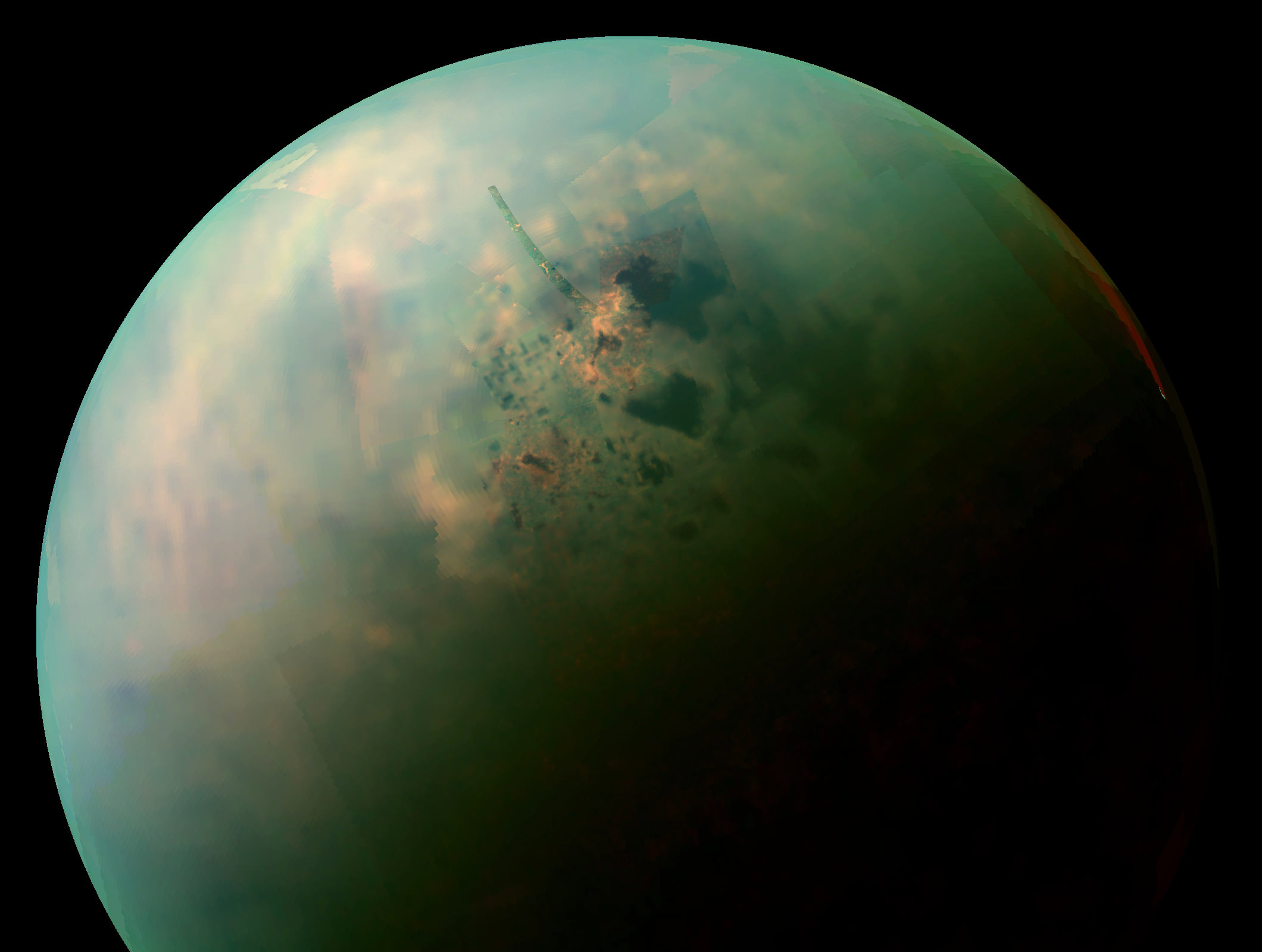
Saturn’s largest moon has unique qualities that have not been observed anywhere else in the universe so far. Namely, Titan is the only satellite in our family of planets known to have a substantial atmosphere. Additionally, it is the only world besides Earth known to have a system of liquid rivers, lakes, and seas. It can even rain and snow. The twist is that the liquid is not water, but methane, ethane, and other hydrocarbons. Normally, water is the key element that should be present somewhere if we expect to find life, but what if it’s not actually necessary? Carbon is a primary component of all known life on Earth and is the second most abundant element in the human body by mass after oxygen. It is a unique element that can bond to nearly anything, creating a wide variety of molecular structures. Therefore, some scientists suggest that methane and other hydrocarbons could be used as a solvent for life on Titan and similar worlds instead of water. So, if life exists on Titan, it would be very different from anything we have ever known before.
Ganymede
System: Jupiter
Diameter: 0.4 Earths
Mass: 0.025 Earths
Atmosphere: Very thin, mostly oxygen
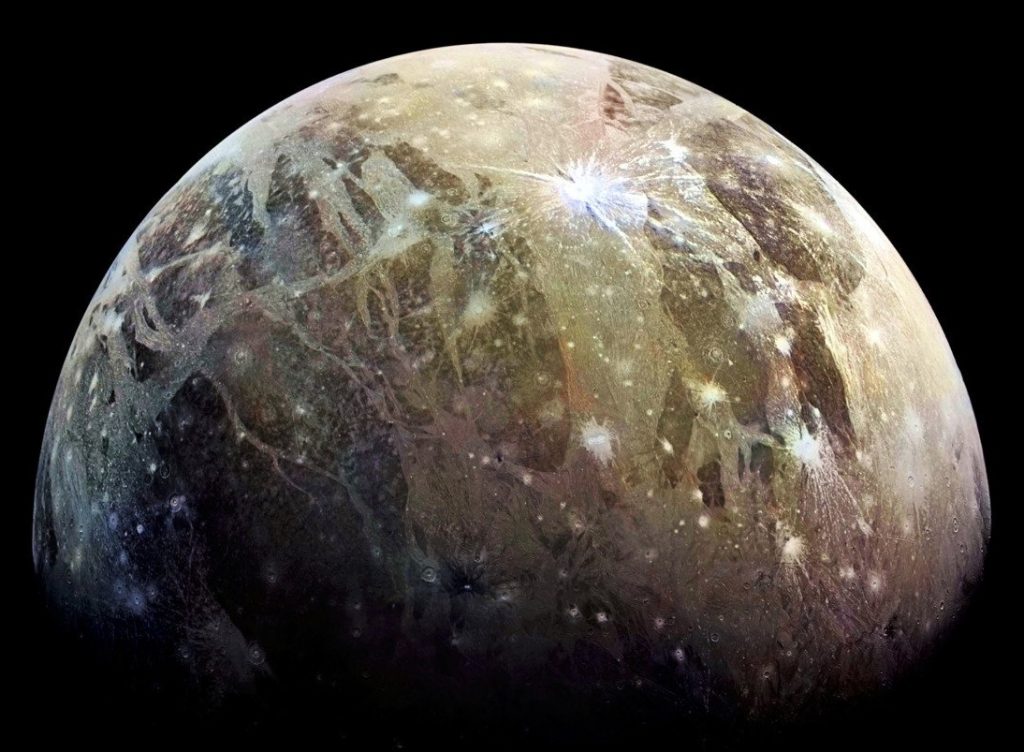
The largest moon in the Solar System is also the only one to have a significant magnetic field. This is crucial for keeping life on Earth safe from radiation, so it could have a similar role on Ganymede as well. Because of this commonality, auroras can be observed on its poles just like the northern lights can be seen on our planet. Interestingly, research studies have shown that Jupiter’s massive satellite could have layers of ice and liquid water between its surface and core. Tidal forces from Jupiter could keep this water in a frigid liquid form, so perhaps life could have evolved underneath the surface.
Other potentially habitable moons
Callisto

This is the most distant of Jupiter’s four largest moons, which means less radiation than the others. It is believed that Callisto may also contain a subsurface ocean, potentially habitable by living organisms. Its atmosphere consists of carbon dioxide, hydrogen, and oxygen, making this moon more hospitable to life as we know it.
Triton
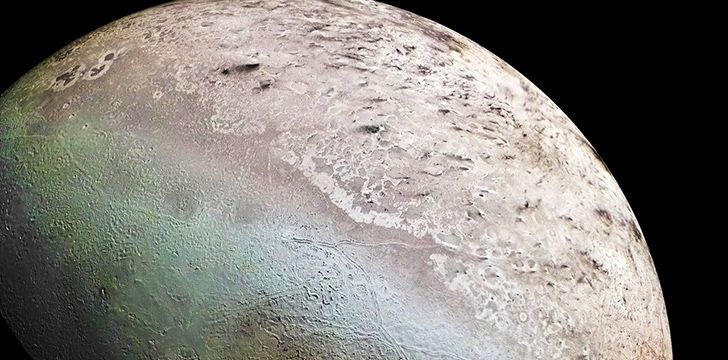
There is a possibility that Neptune’s largest moon is home to alien life. Scientists are not completely sure if an ocean exists beneath its frozen crust, but there are some cracks and volcanic features on this world which suggest it is warmed by tidal heating from its planetary companion. Even though the surface of Titan is one of the coldest places in the solar system, the inner heat and geological activity could potentially provide conditions for water to exist in liquid form.
Io

Io is the most volcanically active world in the entire Solar System, so at first glance, it doesn’t look very hospitable and habitable. However, it could have had liquid water in the past, which in combination with the heat could have supported life.
Dione
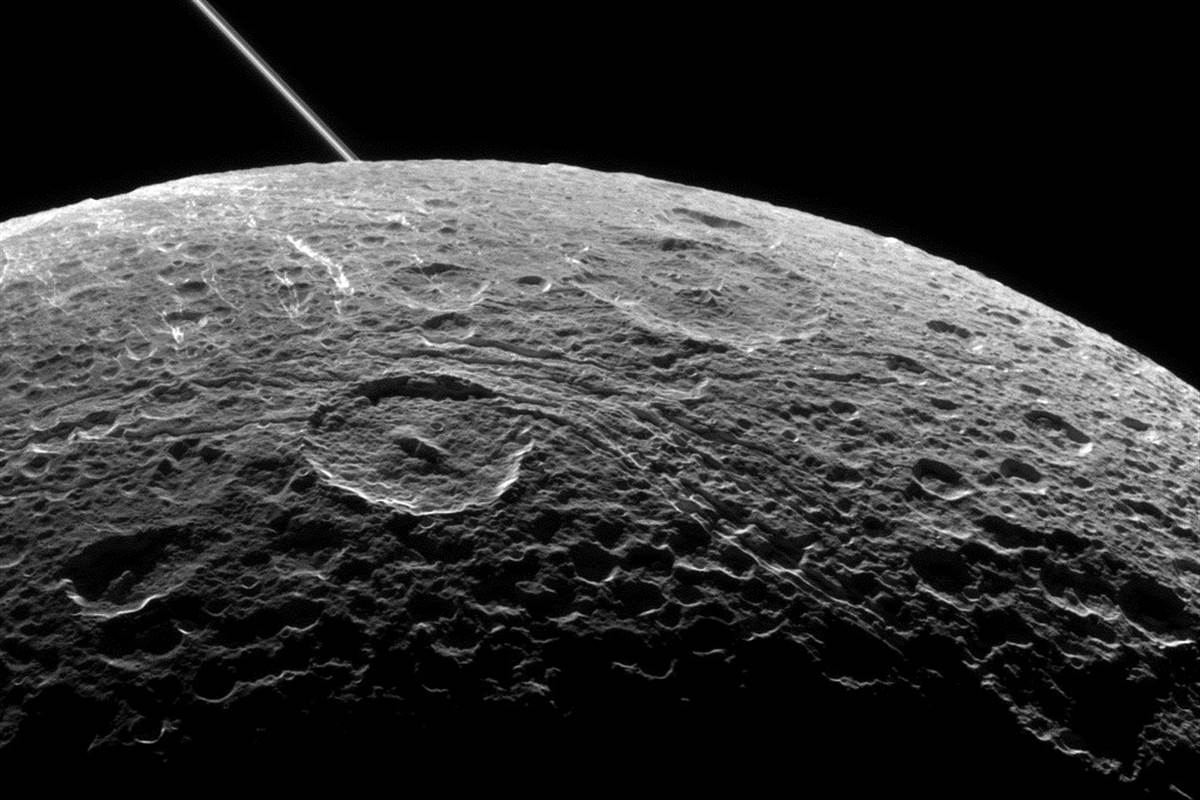
This icy moon which orbits around Saturn is also thought to have an ancient ocean under the surface. However, the crust could be thick as much as 100 kilometers. Still, some form of life could theoretically exist down there.
Charon
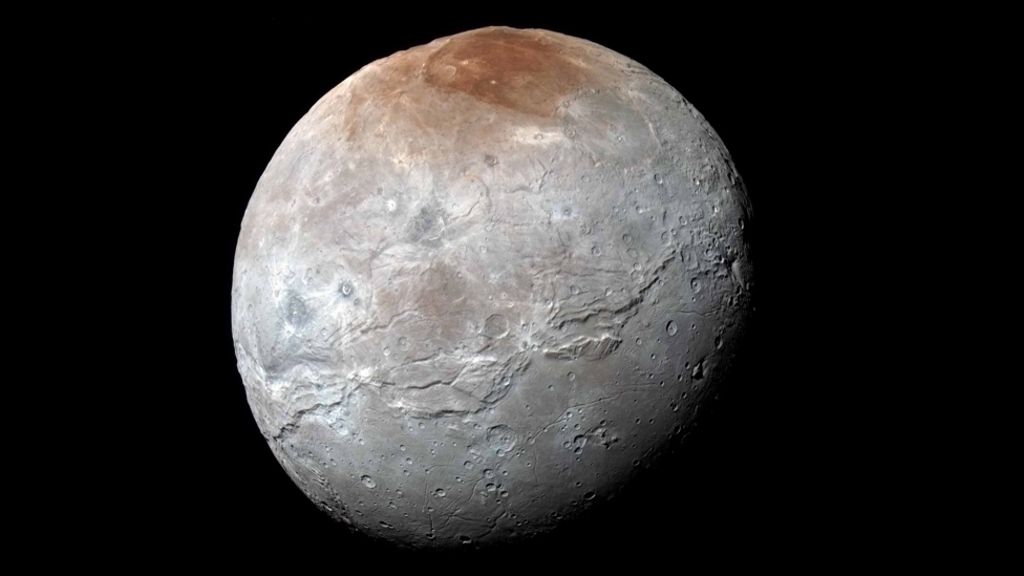
A canyon and suspected cryovolcanic activity may suggest that Pluto’s largest moon once had an ancient internal ocean of water and ammonia. Whether it could have been habitable, remains a mystery.

